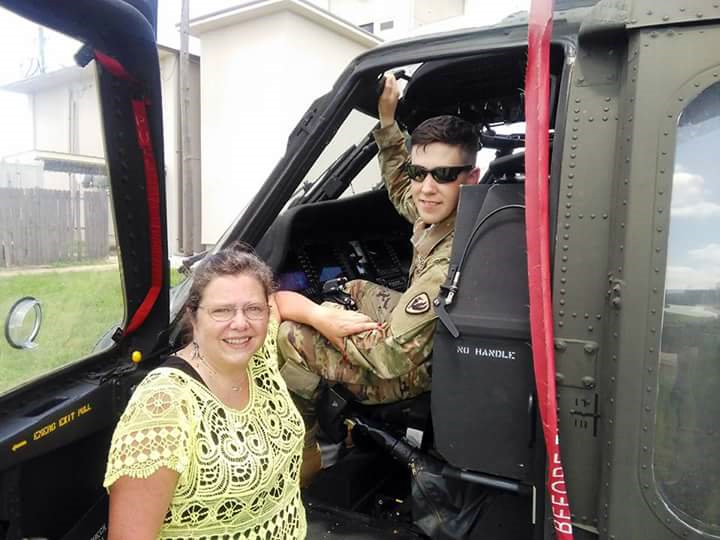When Seth Gabbard recited the names of US presidents from memory as a kindergartner, he never anticipated the simple exercise would eventually help him become a combat helicopter pilot.
But after 13 years of service in the US Army, he can still see how homeschooling prepared him for a challenging and fulfilling military career.
Along with his two siblings, Seth was homeschooled for most of his education. In 10th grade his mother, Jenny, began to direct an academy at the church where his father, Danny, served as pastor. He switched to that school, and Jenny continued to direct his learning.
“His mom was responsible for 95 percent of his education, and all the credit goes to her,” said Danny.
Groundwork for Learning
Seth’s mother employed an educational model inspired by Charlotte Mason, who believed that teaching students virtue, self-discipline, and a desire for service lays the foundation for further instruction in academics and vocational training.
“She really adhered to the principle that if you teach a child how to make a life, a living will come,” Seth’s father said, referring to his mom.
His family’s focus on patriotism and civic duty prompted Seth to consider a military career at an early age. He also had the example of several forebears to inspire him.
Seth’s grandfather, a decorated World War II veteran, landed with Allied troops on the beaches of Normandy, France, in June 1944. Another relative was killed during the Japanese surprise attack on Pearl Harbor in December 1941.
Seth enlisted in the Army in 2010, a few months after graduating from high school.
“I had my mind made up that this is what I wanted to do,” he said. “It helped that the recruiting office was really open to homeschoolers,” he added.
Professional Development
Seth started out by learning to pilot aerial drones—unmanned aircraft used for a wide range of missions, including surveillance, search and rescue, communications, and attacking hostile targets. Though Seth flew his craft by remote control, he said the experience led him to believe he had the skills to pursue a much more challenging role in Army aviation.
After five years of service, Seth applied for and was accepted into helicopter flight school. But first, he had to complete training to become a warrant officer—which inserted him into a different echelon of leadership and career development.

Seth Gabbard shows off a Sikorsky UH-60 Black Hawk helicopter to his mother, Jenny.
“It’s a pretty awesome position,” Seth explained. “You do take care of soldiers on a day-to-day basis, but we’re really more tactical and technical experts than administrators or managers.”
When Seth arrived at Fort Rucker, Alabama, to begin pilot training, his experience vacillated between the thrill of flying and the challenge of processing massive amounts of information.
He enjoyed climbing into a helicopter and taking the controls for the first time, despite being aware that the aircraft’s distinctive markings made him stand out as a novice. “It’s painted bright white and orange to let everyone know you’re a student pilot,” Seth noted.
Matter of the Mind
Learning the additional material associated with piloting helicopters required hours of study every night. Seth had to brush up on math to master navigation and other tasks involving advanced calculations. He and his fellow students were also expected to recite specific information on demand—especially guidance for dealing with emergencies.
Seth’s instructors were veteran pilots who’d been flying for decades. “Those guys can recite the technical manual from front to back,” he said.
But he found his homeschooling background gave him an advantage in this aspect of his training.
“Our kids did daily recitation,” his father recalled. They memorized poems, Scripture, and excerpts from the Constitution. “It was a constant for their entire homeschool career,” he said.

Danny Gabbard pins aviator’s wings onto Seth as he graduates from US Army helicopter flight school.
Seth’s ability to commit things to memory not only helped him in flight school, but has also benefited his career. He still draws on this skill at his current duty post, where he helps train younger pilots.
“I’ve been told people are amazed at what I can remember,” Seth said, quickly adding that he feels he hasn’t attained the prodigious ability demonstrated by the old salts at flight school. Drawing an analogy from the Star Wars sagas, he said, “I’m probably at the level of a new Jedi.”
Fulfilling Career
Since qualifying as a pilot, Seth has mostly flown Black Hawk helicopters, which are used extensively to transport troops into combat. He’s served on several overseas missions. On one of his longest flights, he traveled from France to Estonia in support of NATO allies in Europe.
In 2018, while piloting a medical evacuation helicopter in Afghanistan, his aircraft was fired upon by Taliban fighters. In the unlikely event that he had been shot down, Seth said he knew he could rely on the support of attack aircraft and rescue crews who were standing by.
He hopes to continue flying for the Army for a long time.
“I feel fully committed to serving 20 years or more,” Seth said. “I can’t see myself getting out before then. I love what I do. I love the camaraderie.”
However long his career lasts, Seth said he’ll always trace its foundations to what he was taught at home decades ago.
“I attribute a lot of my success to my mom,” he said. “She was there for me all the way to graduation.”
